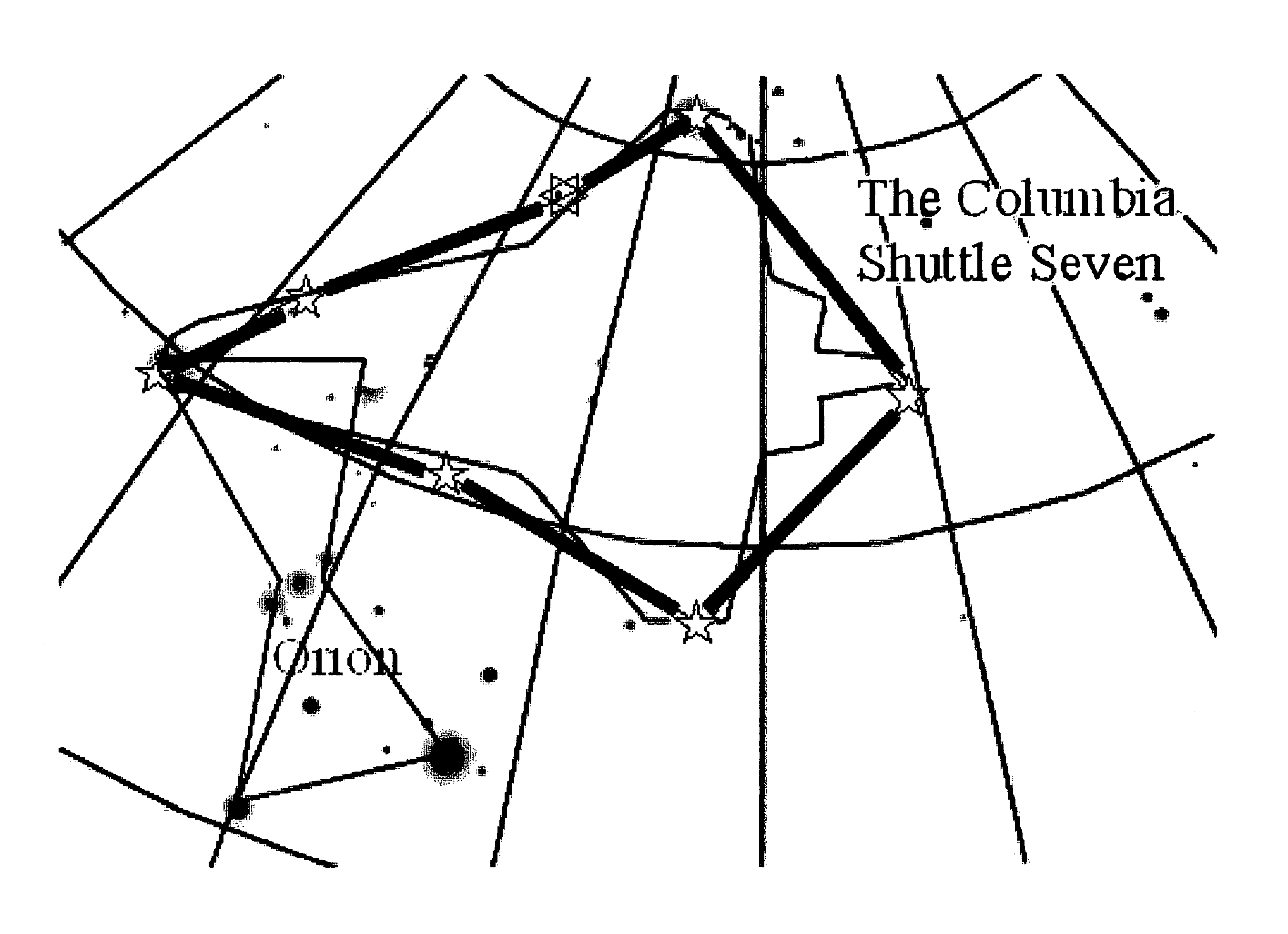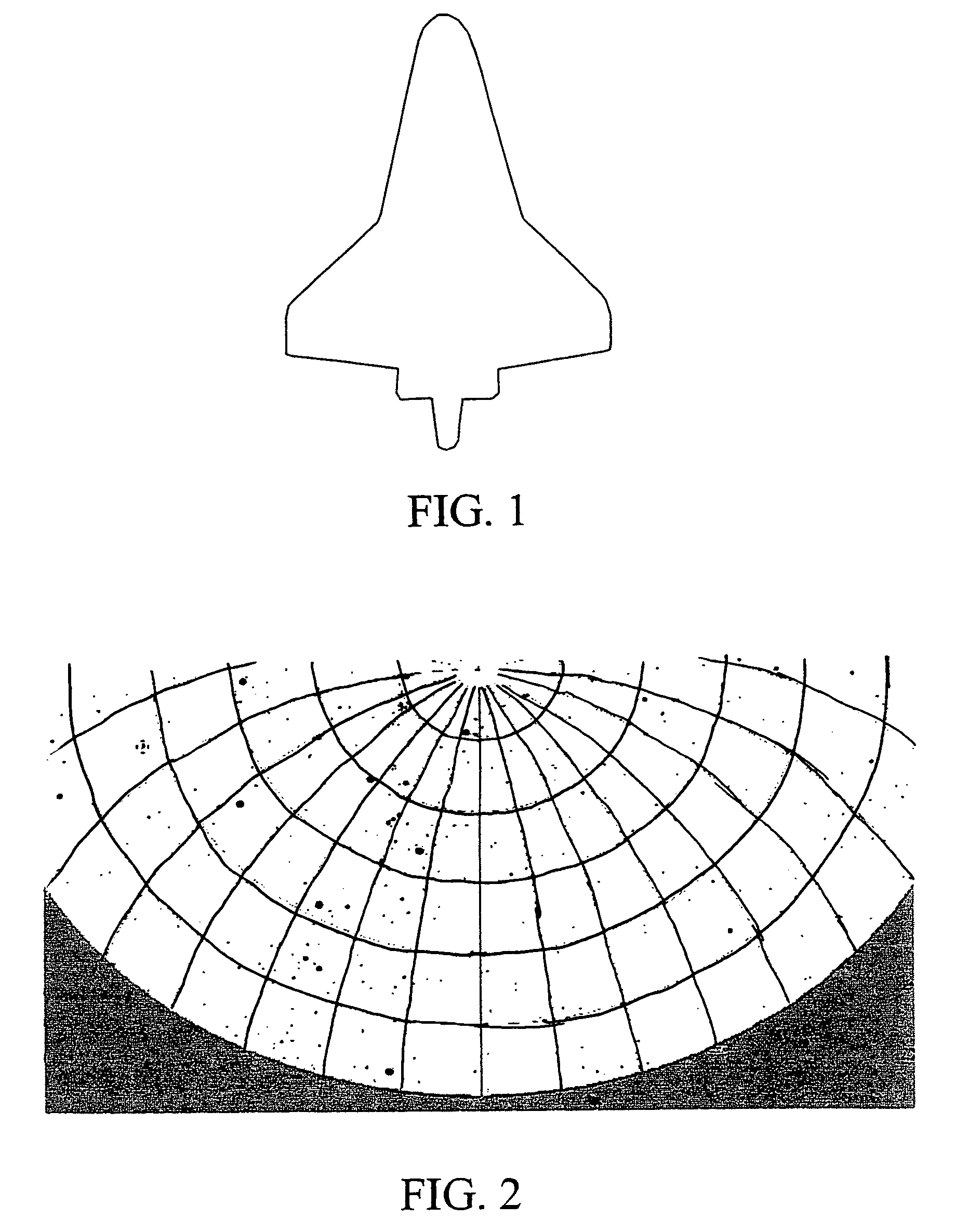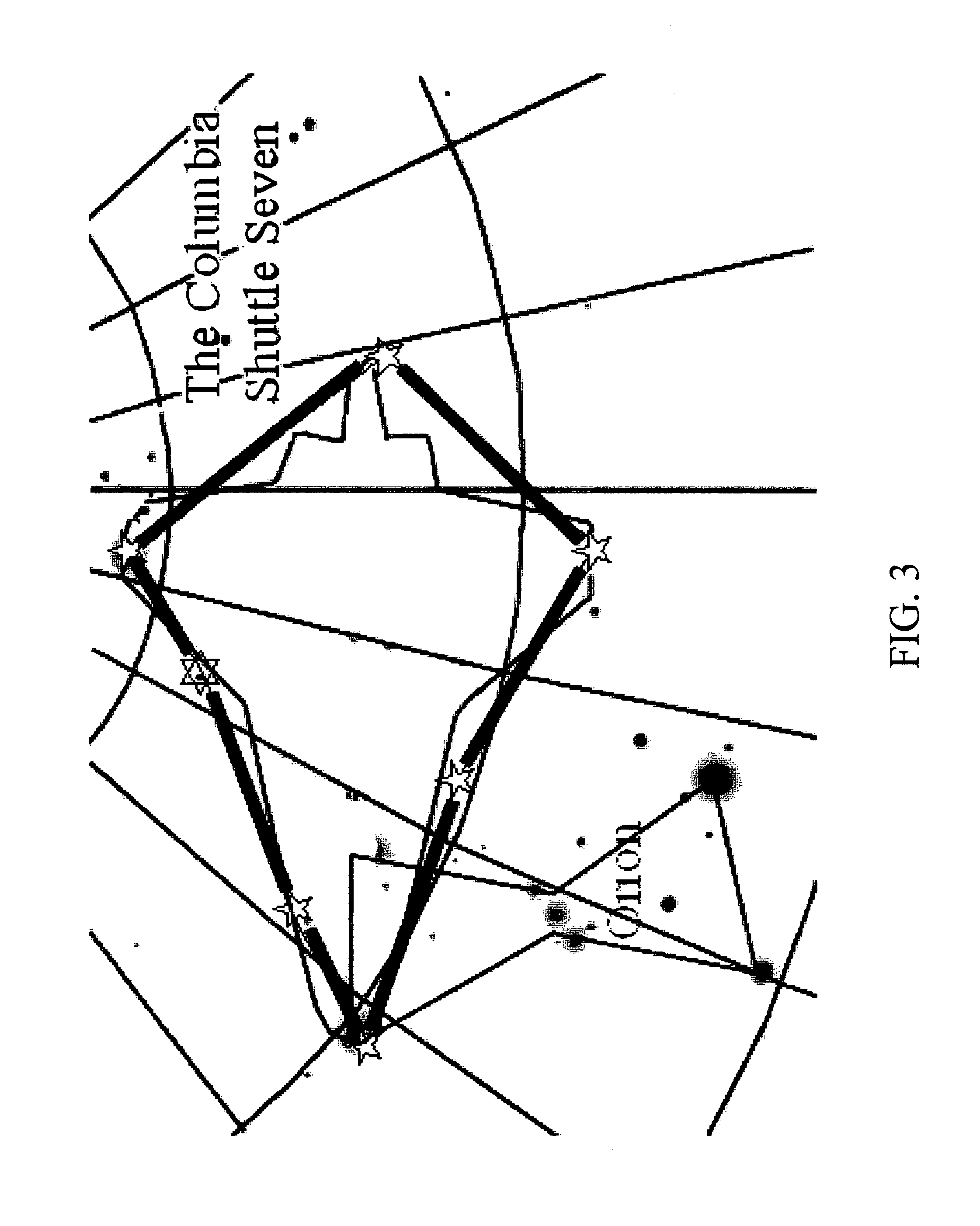Methods for identifying and registering constellations
a constellation and constellation technology, applied in the field of constellation identification and constellation registration, can solve the problems of not being able to identify everything all, the universe is quite immense, and ordinary people will find it difficult, if not impossible, to identify a particular star or constellation on any given day
- Summary
- Abstract
- Description
- Claims
- Application Information
AI Technical Summary
Benefits of technology
Problems solved by technology
Method used
Image
Examples
example 1
Creating a Constellation
[0032]1. Start with outline of the desired image (see, for example, FIG. 1).[0033]2. Copy the image outline onto a semi-transparent or transparent media, such as onion or tracing paper. (This outline will be used later to reposition the desired image over a star map to locate constellation stars.)[0034]3. Determine any required characteristics or attributes that limit the targeted population of stars. These may include, but are not limited to the following:[0035]a. Requiring a certain star, e.g., a star from the big dipper constellation, Ursa Major.[0036]b. Requiring the constellation to be visible in a particular geographic location, date, and time, e.g., Yardley, Pa. at 10:00 p.m. on July 4.[0037]c. Requiring one (or more) of the stars to be visible with the naked eye.[0038]4. Reduce the population of available stars to those that meet the specified limits. For example:[0039]a. If there is a requirement that stars be visible to the naked eye, then a databas...
example 2
Creating the Unique Constellation Registry
[0050]1. The Unique Constellation Registry is used to identify and / or document the stars that comprise constellations.[0051]2. For each constellation that is entered, the following minimum information is identified:[0052]a. The name of the constellation.[0053]b. The name (or other identifier) of each star that comprises the constellation.[0054]3. For each constellation that is entered, the following optional information is identified:[0055]a. Owner identification (e.g., name)[0056]b. Owner contact information[0057]c. Creation date[0058]d. Dedication or tribute data[0059]e. Anchor star identification (The anchor star is a single star within the constellation that is used to help locate the other stars of the constellation.)[0060]f. Registration ID or registration identification (a unique, multi-digit alphanumeric)[0061]4. In one design of the Unique Constellation Registry database, there exists two databases: the constellation database and th...
PUM
 Login to View More
Login to View More Abstract
Description
Claims
Application Information
 Login to View More
Login to View More - R&D Engineer
- R&D Manager
- IP Professional
- Industry Leading Data Capabilities
- Powerful AI technology
- Patent DNA Extraction
Browse by: Latest US Patents, China's latest patents, Technical Efficacy Thesaurus, Application Domain, Technology Topic, Popular Technical Reports.
© 2024 PatSnap. All rights reserved.Legal|Privacy policy|Modern Slavery Act Transparency Statement|Sitemap|About US| Contact US: help@patsnap.com










